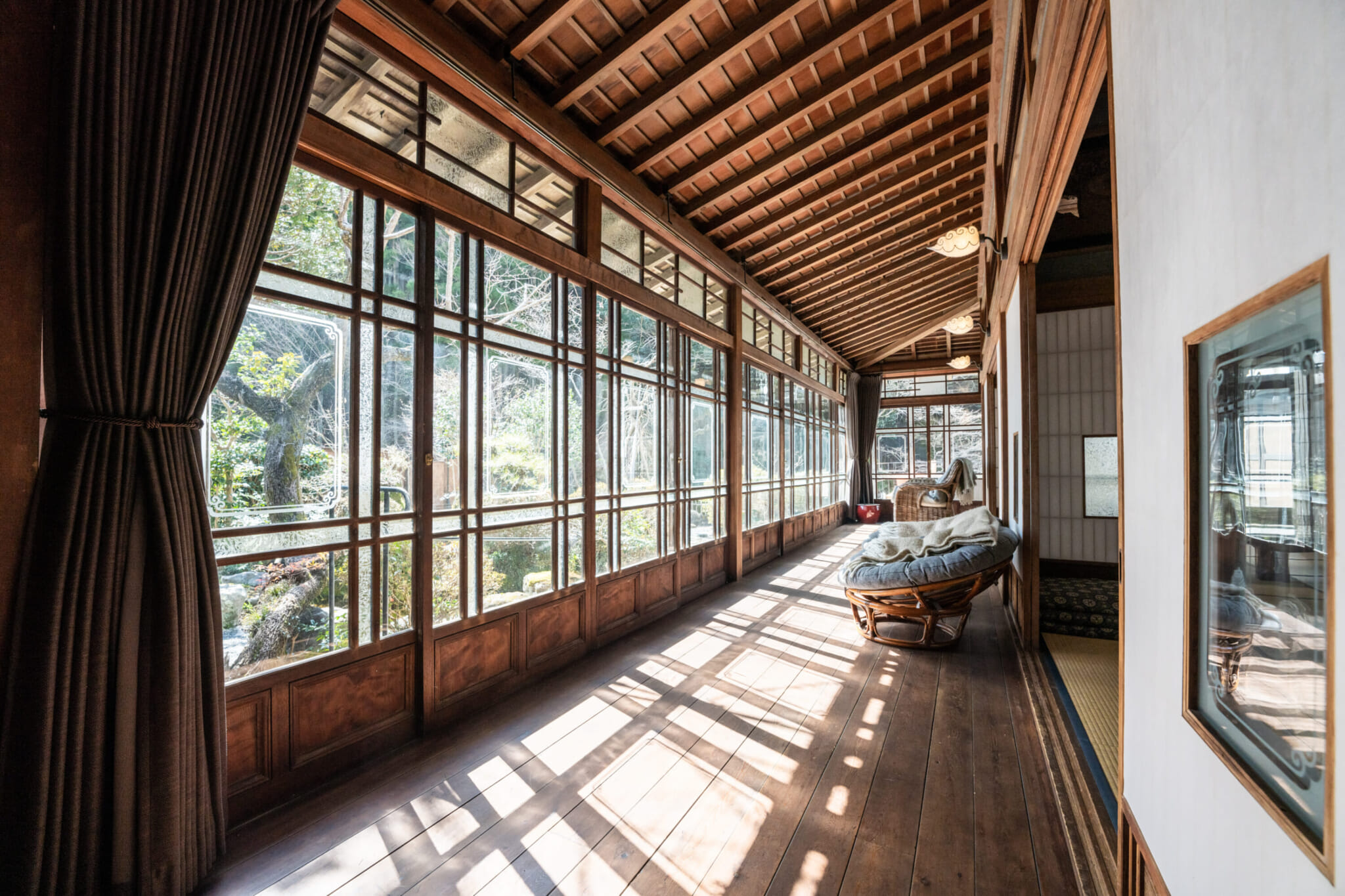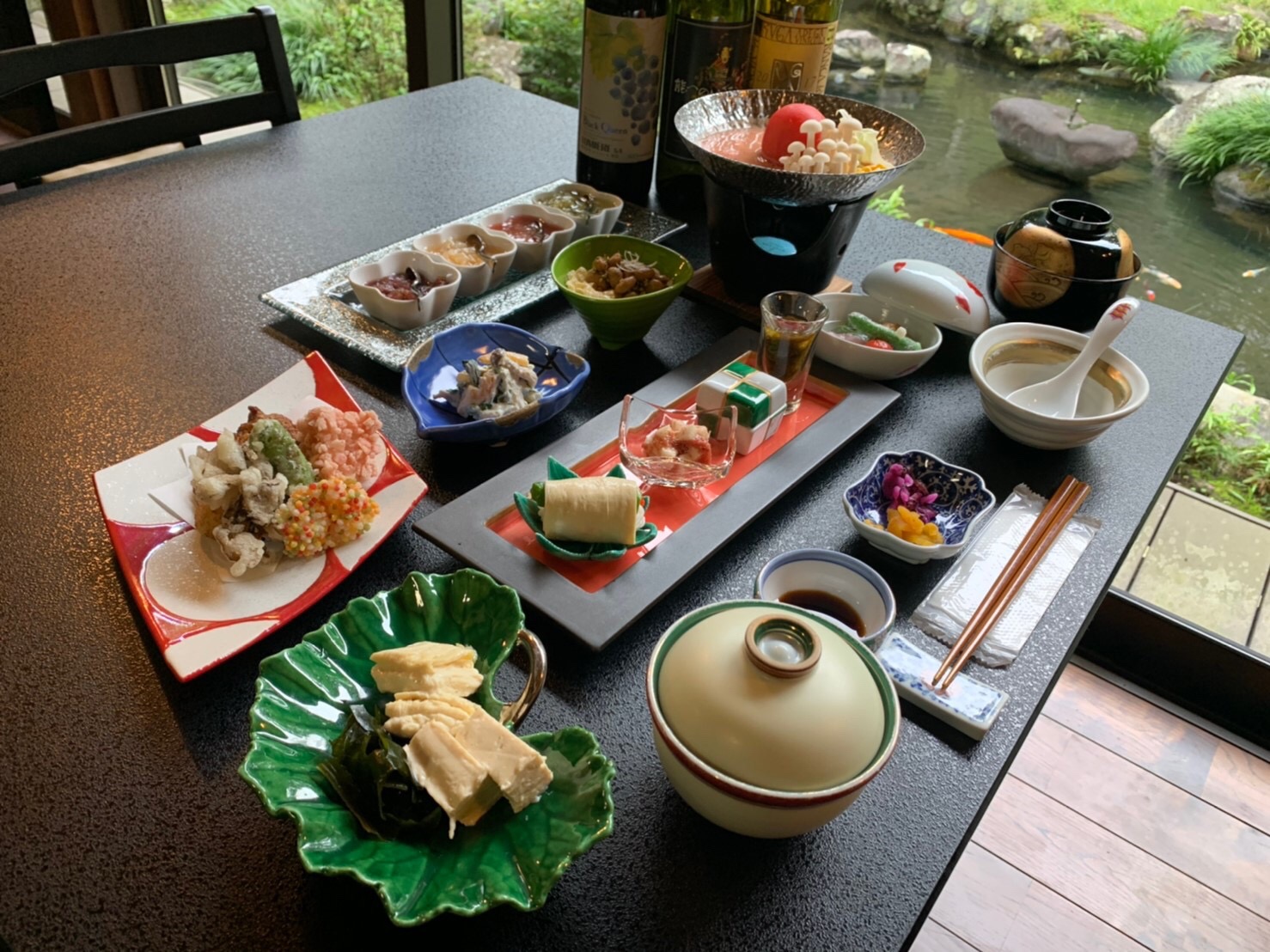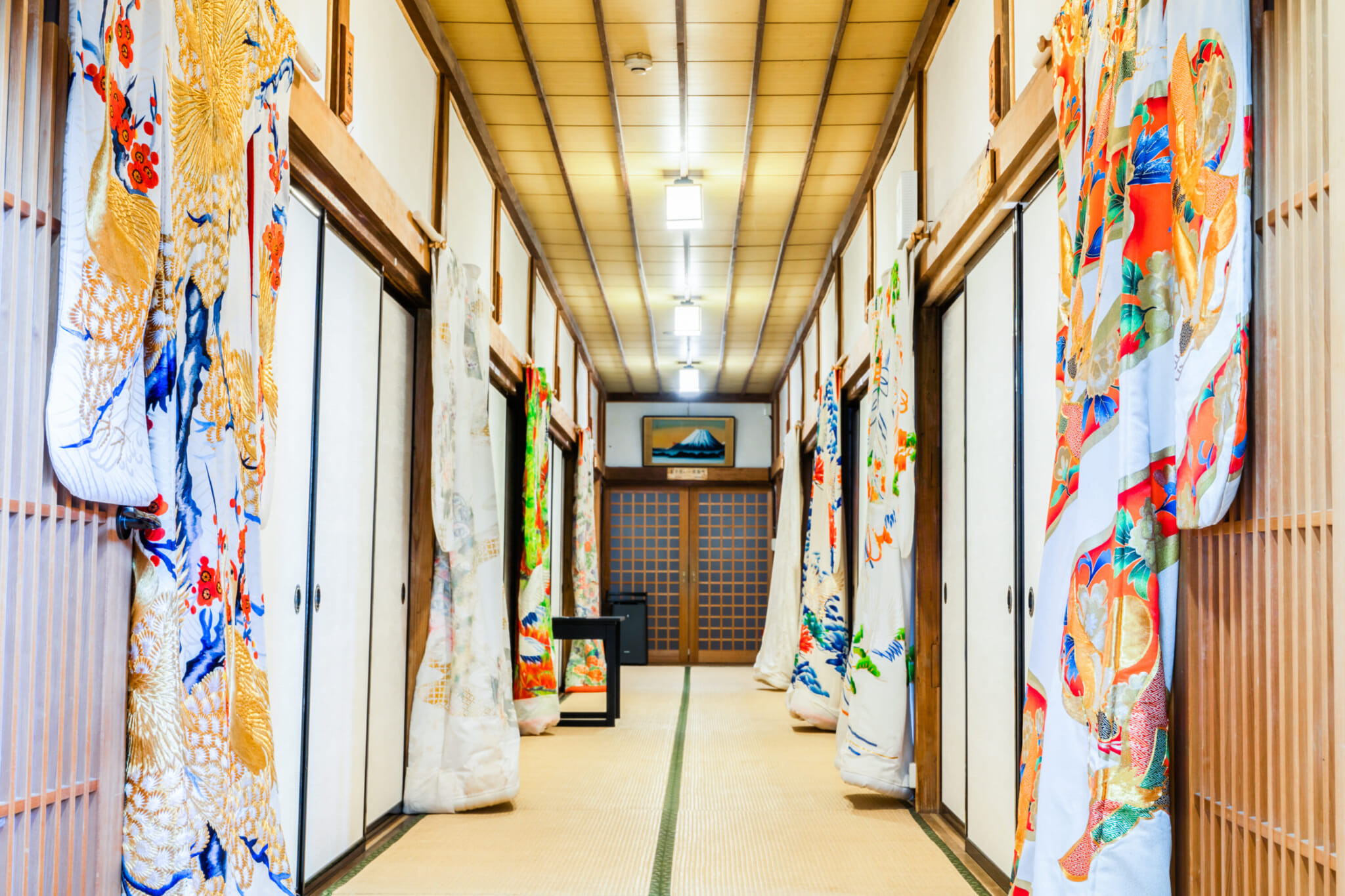For over 700 years, worshippers have visited Minobusan, one of Japan’s most sacred mountains. An imposing sanmon gate welcomes visitors to Kuonji, the heartland of Nichiren Buddhism, while the scent of towering cedar trees helps relieve the arduous climb up the 287 “steps of enlightenment” to the temple’s main hall. Guests staying at nearby Kakurinbo, a popular temple lodging, and its sister property, Guest Villa Ebisuya, are encouraged to make this same pilgrimage, if only to savor the view from Kuonji’s extensive grounds and catch a glimpse of Mount Fuji from the mountain’s peak.
Elements of Tradition
As an important satellite temple, Kakurinbo has accommodated visiting priests and pilgrims for over 550 years. Today, Kakurinbo offers a place of relaxation for tourists and worshippers alike while maintaining a traditional environment in which guests may enjoy local cuisine and cultural experiences. Visitors to Minobusan can also choose to stay at Guest Villa Ebisuya, an early-Showa-era merchant’s house that was painstakingly renovated in 2021 and opened as a self-contained holiday home available on a nightly basis. The interior of Ebisuya marries exquisite, authentic decor with highly functional, state-of-the-art amenities. The open-air ceramic bath is fed by Minobusan’s only hot spring source while the sauna tent provides a further layer of seclusion to this discrete accommodation. Guests at Ebisuya can choose to self-cater using the fully equipped kitchen, order meals from neighboring Café Zencho or dine at Kakurinbo.
Indelible Experiences
For those traveling to mark a special occasion such as a wedding anniversary or a honeymoon, the kimono experience (available to guests at both Kakurinbo and Ebisuya for ¥500 per person) is not to be missed. Guests can try on any one of 13 authentic wedding kimonos and two men’s montsuki hakama to commemorate their special day, with either the traditional villa or the temple’s shinji-ike garden as a picturesque backdrop.
Other activities available include repairing broken pottery items with gold paste, a practice known as kintsugi, and sutra copying, a meditative Buddhist exercise. Kakurinbo’s sutra sheets include English explanations, allowing non-Japanese to easily understand the sutras that they are tracing. From the faint aroma of patchouli that arises while grinding the sumi ink to the soft luster of the Amehata inkstone, the preparation alone is worth the small participation fee.
Commemorative Celebrations
Consider timing your visit to Minobusan to coincide with Oeshiki, an annual festival that commemorates Nichiren’s death. This year, the event will be held on October 12. Spinning surprisingly heavy matoi flagpoles and banging on handheld drums, worshippers weave their way through the narrow streets of Minobusan to the Kuonji temple complex, where the rhythmic chanting and raucous drumming reach fever pitch. Visitors are encouraged to join in, while stalls along the way heighten the festive mood with locally produced eats and Yamanashi’s celebrated wine.
Visit the official website to find out more and make a reservation:












